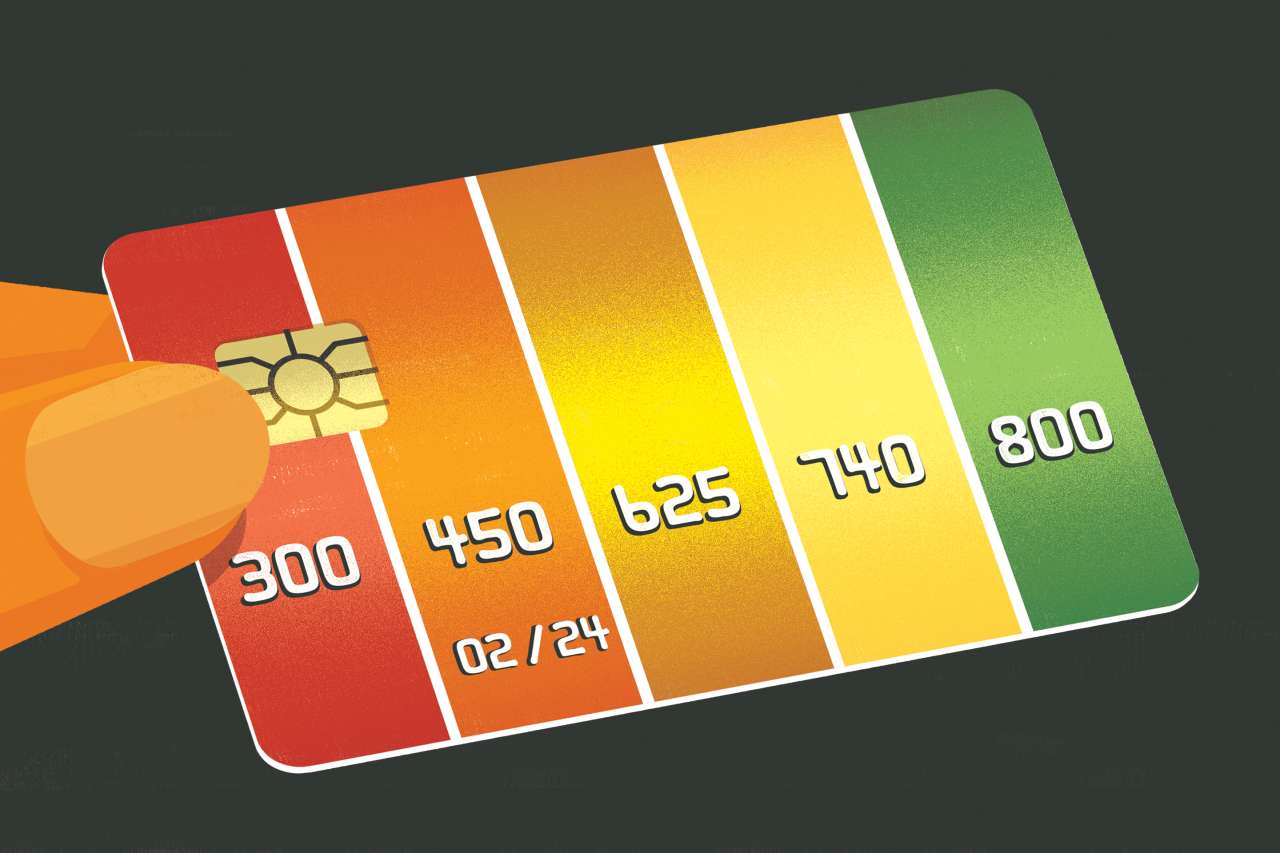Home>Finance>How Long Does It Take For A Capital One Deposit For A Secured Card?


Finance
How Long Does It Take For A Capital One Deposit For A Secured Card?
Modified: March 2, 2024
Find out the typical wait time for a Capital One secured card deposit. Learn how long it takes for funds to become available and manage your finances effectively.
(Many of the links in this article redirect to a specific reviewed product. Your purchase of these products through affiliate links helps to generate commission for LiveWell, at no extra cost. Learn more)
Table of Contents
Introduction
Welcome to the world of personal finance, where every decision you make can have a significant impact on your financial well-being. One crucial aspect of managing your finances is establishing and building credit. However, for individuals with limited or damaged credit history, this can be a challenging endeavor. In such cases, secured credit cards can serve as a valuable tool for rebuilding credit and establishing a positive payment record.
In the realm of secured credit cards, Capital One stands out as a reputable and trusted financial institution offering a range of financial products designed to meet the diverse needs of consumers. Among these offerings, the Capital One Secured Card has garnered attention for its accessibility and potential to help individuals improve their credit standing. If you’re considering applying for a Capital One Secured Card, it’s essential to understand the process of making a deposit and the associated timeframe for the deposit to be processed.
In this comprehensive guide, we’ll delve into the intricacies of securing a Capital One Secured Card, shedding light on the deposit process and the factors that can influence the time it takes for the deposit to be reflected in your account. By the end of this article, you’ll have a clear understanding of what to expect when making a deposit for a Capital One Secured Card and how to navigate the process effectively to set yourself up for financial success.
Understanding Capital One Secured Cards
Before delving into the specifics of making a deposit for a Capital One Secured Card, it’s essential to grasp the fundamental concept of secured credit cards and how they function within the realm of personal finance. A secured credit card operates much like a traditional credit card, allowing cardholders to make purchases and build credit by demonstrating responsible borrowing behavior. However, what sets a secured credit card apart is the requirement for a security deposit to open the account.
With a Capital One Secured Card, the security deposit serves as collateral and determines the initial credit limit extended to the cardholder. This deposit is fully refundable, provided that the cardholder manages the account responsibly and fulfills their payment obligations. The primary purpose of a secured credit card is to provide individuals with limited or damaged credit history an opportunity to build or rebuild their credit through consistent, on-time payments and responsible credit utilization.
Capital One’s commitment to financial inclusivity is evident in its approach to secured credit cards, as the Capital One Secured Card is designed to be accessible to a wide range of applicants, including those with less-than-ideal credit scores. By offering a pathway to credit improvement, Capital One empowers individuals to take control of their financial futures and work toward achieving their long-term financial goals.
Furthermore, Capital One Secured Cards come with additional benefits, such as fraud protection, account alerts, and the potential for credit limit increases with responsible card usage. These features contribute to a positive cardholder experience and demonstrate Capital One’s dedication to supporting individuals on their journey toward financial stability.
Understanding the fundamental principles of secured credit cards, particularly within the context of Capital One’s offerings, lays the groundwork for comprehending the deposit process and the associated timeline for deposit processing. With this knowledge in hand, you’ll be better equipped to navigate the steps involved in securing a Capital One Secured Card and leveraging it as a tool for financial advancement.
Making a Deposit for a Capital One Secured Card
When applying for a Capital One Secured Card, the process begins with submitting a security deposit to establish the credit line for the account. The deposit amount typically ranges from $49 to $200, depending on the applicant’s creditworthiness and the specific Capital One Secured Card product. This deposit serves as a form of collateral, providing assurance to Capital One and mitigating the risk associated with extending credit to individuals with limited or damaged credit history.
Upon approval of the application, the next step involves remitting the security deposit to Capital One. This can be accomplished through various payment methods, including electronic bank transfers, wire transfers, or by mailing a check or money order. Capital One provides flexibility in deposit payment options to accommodate the diverse needs of applicants, ensuring a seamless and convenient process for initiating the secured card account.
It’s important to note that the security deposit is held in a dedicated account and does not immediately translate to an available credit line. The deposit amount determines the initial credit limit, and the cardholder’s responsible use of the secured card will contribute to building a positive credit history. As such, making the deposit marks the pivotal moment when the cardholder transitions from the application phase to actively managing the secured card account.
After the deposit is submitted and the secured card account is established, the processing of the deposit begins. Capital One undertakes the necessary steps to verify and allocate the deposit, a process that involves internal review and validation to ensure accuracy and compliance with regulatory requirements. This diligent approach reflects Capital One’s commitment to maintaining the integrity of the deposit process and safeguarding the interests of cardholders.
Understanding the mechanics of making a deposit for a Capital One Secured Card is essential for individuals embarking on their credit-building journey. By comprehending the significance of the deposit and the subsequent steps in the process, applicants and cardholders can navigate the experience with confidence and clarity, setting the stage for responsible credit management and long-term financial progress.
Factors Affecting the Time for Deposit Processing
Several factors come into play when considering the timeline for processing the security deposit for a Capital One Secured Card. Understanding these variables can provide insight into the potential duration of the deposit processing period and help manage expectations during this critical phase of securing the card.
- Payment Method: The method used to remit the security deposit can influence the processing time. Electronic bank transfers may result in quicker processing compared to mailing a physical check, as the former allows for immediate electronic verification and allocation of funds.
- Verification Processes: Capital One employs rigorous verification procedures to ensure the security and accuracy of deposit transactions. These internal processes, which may include identity verification and fraud checks, can impact the speed of deposit processing.
- Banking Timelines: The processing timelines of the financial institutions involved in the deposit transaction, such as the cardholder’s bank and Capital One, can affect the overall duration. Bank processing schedules, including weekends and holidays, may introduce delays in the verification and allocation of funds.
- Application Volume: Fluctuations in application volumes and deposit submissions can influence processing times. During periods of high application activity, such as promotional campaigns or increased demand for secured cards, processing timelines may be extended to accommodate the influx of deposits.
By considering these factors, applicants and cardholders can gain a clearer understanding of the variables that contribute to the time required for deposit processing. This awareness can inform expectations and guide individuals in proactively managing the deposit process to ensure a smooth and timely experience.
Typical Timeframe for Capital One Secured Card Deposits
Upon submitting the security deposit for a Capital One Secured Card, applicants and cardholders are often eager to ascertain the typical timeframe for the deposit to be processed and reflected in their account. While the exact duration can vary based on individual circumstances and external factors, understanding the general timeline for deposit processing can provide valuable insight into what to expect during this phase of securing the card.
Typically, once the security deposit is submitted, Capital One initiates the verification and allocation process. This involves confirming the receipt of the deposit, validating the accuracy of the transaction details, and allocating the funds to the secured card account. While the specific processing time can fluctuate, many applicants experience an average processing period ranging from 5 to 7 business days.
It’s important to note that this timeframe serves as a general guideline, and actual processing times may vary based on factors such as the payment method used, internal verification processes, and the volume of deposit transactions being handled by Capital One. Additionally, external factors such as banking schedules and holidays can influence the overall duration of deposit processing.
Capital One strives to expedite the processing of security deposits to ensure a seamless and efficient experience for applicants and cardholders. However, it’s advisable for individuals to anticipate potential variations in processing times and exercise patience during this phase. Maintaining open communication with Capital One’s customer support team can also provide clarity and reassurance regarding the status of the deposit processing.
By understanding the typical timeframe for Capital One Secured Card deposits, individuals can approach the deposit process with informed expectations and a proactive mindset. This knowledge empowers applicants and cardholders to navigate the deposit processing period with confidence, setting the stage for a positive and rewarding experience in managing their secured card account.
Tips for Ensuring Timely Deposit Processing
While the processing of security deposits for Capital One Secured Cards is primarily managed by the financial institution, there are proactive steps that applicants and cardholders can take to facilitate a smooth and timely deposit processing experience. By adhering to these tips, individuals can optimize the deposit submission process and mitigate potential delays, ensuring that their secured card account is established efficiently.
- Choose Electronic Payment Methods: Opting for electronic bank transfers or other digital payment methods can expedite the processing of the security deposit. Electronic transactions often allow for immediate verification and allocation of funds, reducing the processing time compared to traditional paper-based payment methods.
- Provide Accurate Transaction Details: When submitting the security deposit, it’s crucial to ensure that all transaction details, such as account numbers and payment references, are accurate and complete. This minimizes the likelihood of processing delays stemming from incorrect or incomplete information.
- Monitor Deposit Submission Deadlines: Adhering to any specified deadlines for deposit submission, as communicated by Capital One during the application process, is essential for timely processing. Being mindful of submission timelines can prevent unnecessary delays in establishing the secured card account.
- Stay Informed and Communicate: Keeping abreast of communication from Capital One and promptly responding to any requests for additional information or verification can streamline the deposit processing. Open and proactive communication with Capital One’s customer support team can provide clarity and address any potential issues that may arise during the deposit processing period.
- Plan for Potential Delays: Recognizing that processing times can vary based on internal and external factors, applicants and cardholders should anticipate potential delays and plan accordingly. Allowing for a buffer in the timeline can alleviate undue stress and ensure a more seamless experience.
By implementing these tips, individuals can enhance the efficiency of the deposit processing for their Capital One Secured Card, contributing to a timely and hassle-free establishment of the secured card account. Proactive engagement and attention to detail play a pivotal role in expediting the deposit processing and setting the stage for a positive experience in managing the secured card.
Conclusion
Securing a Capital One Secured Card marks a significant step toward building or rebuilding credit and gaining access to essential financial tools. The process of making a deposit for a secured card, while straightforward, involves various considerations and timelines that applicants and cardholders should be mindful of. By understanding the nuances of deposit processing and taking proactive measures, individuals can navigate this phase with confidence and set the stage for a positive experience in managing their secured card account.
Throughout this guide, we’ve explored the essential aspects of Capital One Secured Cards, shedding light on the deposit process, factors influencing deposit processing times, and tips for ensuring timely processing. Armed with this knowledge, individuals can approach the deposit submission and processing phase with informed expectations and a proactive mindset, optimizing their experience in establishing and managing their secured card account.
It’s important to recognize that while Capital One endeavors to expedite the processing of security deposits, variations in processing times may occur due to a range of internal and external factors. By staying informed, communicating effectively, and adhering to best practices for deposit submission, applicants and cardholders can contribute to a smoother and more efficient deposit processing experience.
As individuals embark on their credit-building journey with a Capital One Secured Card, maintaining financial discipline, making timely payments, and leveraging the card responsibly are essential components of establishing a positive credit history. The secured card serves as a valuable tool for demonstrating creditworthiness and working toward improved financial standing, ultimately paving the way for broader financial opportunities in the future.
By leveraging the insights and tips provided in this guide, individuals can approach the deposit process for a Capital One Secured Card with confidence, setting the stage for a successful and rewarding experience in managing their credit and achieving their long-term financial goals.














